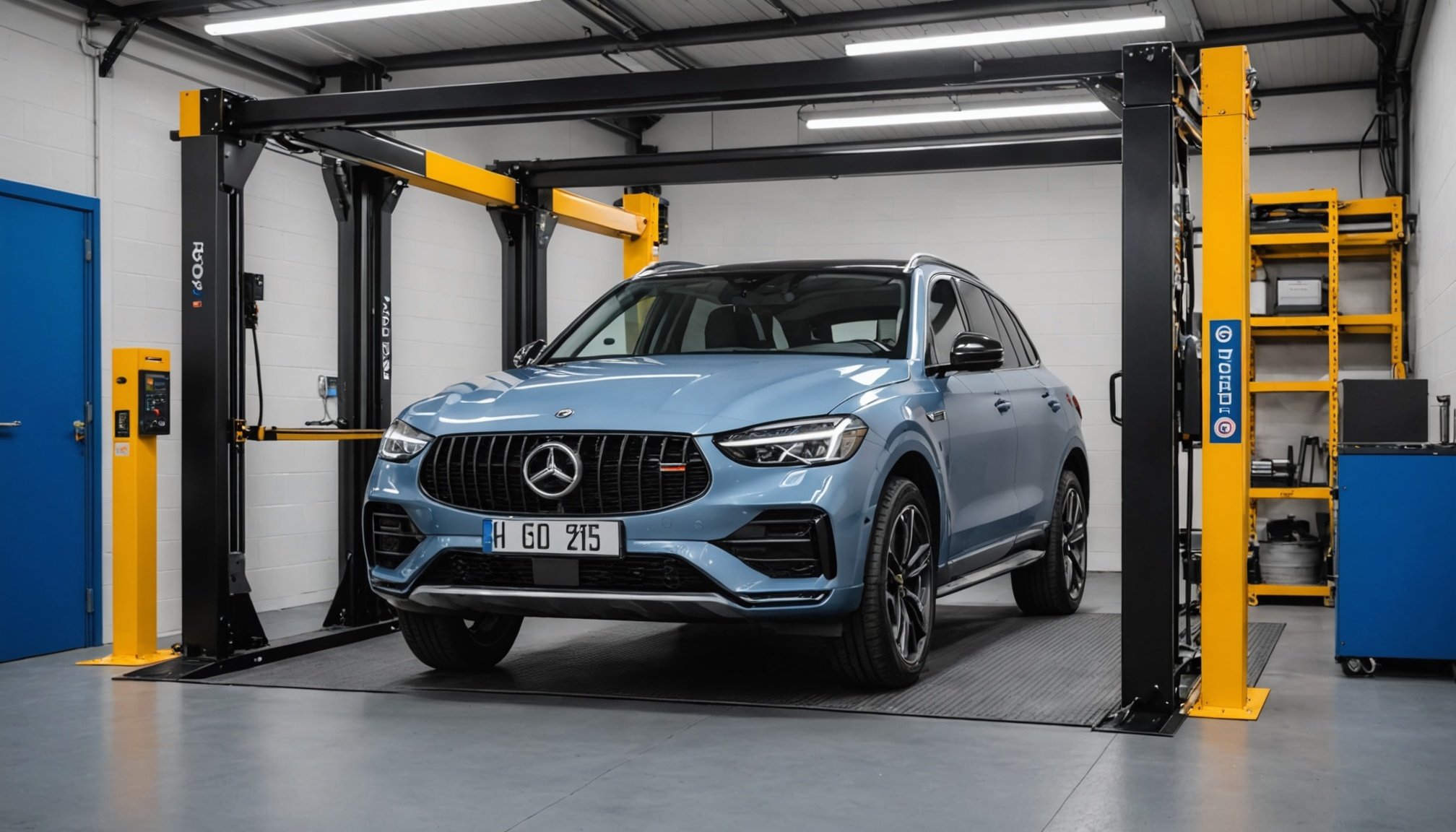Legal Regulations for Car Lift Kit Installation in the UK
When considering the installation of a car lift kit, it is crucial to understand the UK vehicle modification laws that govern these changes. The rules set by the Driver and Vehicle Licensing Agency (DVLA) ensure safety and compliance on public roads.
In the UK, the legal requirements for modifying vehicles, including lift kits, are detailed and specific. First and foremost, any modification must not compromise the vehicle’s safety, which is paramount. The DVLA mandates that any lift kit installation should maintain the vehicle’s structural integrity.
Topic to read : Essential Guidelines for Installing a Custom Audio System in UK Vehicles
Moreover, modifications must be declared to the DVLA if they alter the car’s identity or main characteristics. This includes ensuring that the suspension modifications do not affect the car’s overall stability and handling. Complying with these requirements is not only a legal obligation but also a safety necessity, as improper installations can lead to severe accidents.
Importantly, the law requires that any modification, like a car lift kit, should adhere to manufacturers’ specifications and industry standards. By doing so, car owners can help to ensure that they keep their vehicle roadworthy and insured. Understanding these regulations helps prevent costly penalties and ensures driver safety.
In the same genre : Essential Safety Measures for Installing a High-Powered Audio System in Your UK Vehicle
Safety Standards for Installing Car Lift Kits
When considering a car lift installation, adhering to safety standards is crucial to guarantee the vehicle’s safety compliance. These standards ensure both the integrity of the vehicle and the well-being of those who use it.
Overview of Safety Standards
Car lift kit installations must meet specific safety standards established by automotive authorities. These guidelines detail precise technical requirements for various lift kits, ensuring stability and performance. By complying with these standards, car owners can protect their vehicles against potential mechanical failures and maintain road safety.
Compliance with Automotive Safety Regulations
Vehicle safety compliance involves adhering to stringent regulations set forth by government and industry bodies. This could include meeting requirements for suspension changes, brake system compatibility, and insurance stipulations. Ensuring compliance not only keeps your vehicle roadworthy but also assures that any modifications are lawful and effectively executed.
Importance of Professional Installation
Hiring certified professionals for car lift installations is strongly advised. Professional installers possess a keen understanding of the intricate technical guidelines and relevant safety standards. They have the skills and experience necessary to recognise potential issues, making complex modifications safely. This expertise can prevent costly errors and contribute significantly to the vehicle’s long-term performance and safety.
Necessary Certifications and Permissions
Installing a car lift kit requires meticulous attention to installation certifications and vehicle modification permissions. Compliance documents are critical, ensuring that each step aligns with legal standards.
To begin, you’ll need a list of required certifications. These may include a Vehicle Type Approval Certificate, confirming that the lift kit components meet industry standards. Additionally, you’ll need a Modification Plate, signifying that a qualified professional has conducted the installation.
Acquiring necessary permissions from local authorities is a pivotal step. Often, this involves coordinating with the local Department of Transportation or similar entities. They will review your modification plans, ensuring compliance with safety and environmental regulations.
Documenting the installation process is crucial. Keep all records of the work performed, including invoices from suppliers and certification documents. This not only aids in proving the legality of your modifications but also serves as a reference for future adjustments or inspections.
Without the appropriate certifications, permissions, and documentation, your vehicle may not be legal on public roads. Careful attention to these details ensures a safe and legal modification, allowing you to enjoy your enhanced ride fully.
Potential Risks and Insurance Implications
When considering vehicle modifications, insurance for modified vehicles becomes a critical aspect. However, understanding the specifics of this insurance can be challenging.
Understanding Insurance Coverage for Modified Vehicles
Vehicle modifications can significantly impact your insurance coverage. Insurers often need detailed information about the changes. Modifications not disclosed can lead to liability issues if an accident occurs and could void your policy. Insurance providers assess modifications to determine if they increase the risk of accidents or theft, influencing premium costs.
Risks Associated with Car Lift Kit Installations
Car lift kits are increasingly popular but come with their own set of risks of improper installation. If improperly installed, they can lead to mechanical failures, increasing the vehicle’s accident potential. This not only endangers safety but could also complicate claims due to insurance for modified vehicles refusing to cover damages resulting from negligent installations.
Mitigating Liability and Ensuring Coverage
To mitigate liability, ensure any modifications, like lift kits, are professionally installed. Keep records of the installations and consult with your insurer to confirm these modifications are covered. Such steps safeguard against liability issues and ensure you’re adequately covered under your insurance policy.
User Experiences and Case Studies
Understanding the user experiences with car lift modifications provides valuable insights. Many users report a mix of challenges and successes when undertaking these modifications. The installation process often requires precise planning and adherence to guidelines to prevent any safety hazards. It’s common to encounter variations in user satisfaction, largely attributed to the chosen car lift installation approach and the preparatory measures taken.
One case study explored the installation in a residential garage. The users initially faced difficulties with ceiling height and floor stability, which are frequent issues. However, through adjustments recommended by professionals, they achieved optimal functionality and safety compliance. This reveals the importance of seeking expert advice during the modifications.
Practical examples further emphasize the significance of addressing potential structural modifications early. One notable example involves a repair shop that improved its efficiency post-installation by adapting its space layout, ensuring equipment was easily accessible.
These collective experiences and case studies underline the criticality of detailed planning and adherence to safety standards. The lessons learned often highlight the need for bespoke solutions tailored to specific circumstances, reinforcing the vital role of customized advice in car lift installations.
Practical Checklist for Car Lift Kit Installation
Installing a car lift kit requires careful planning and attention to detail. Ensuring compliance with safety standards while following a structured process can prevent critical issues. This checklist will help streamline your installation process.
Pre-Installation Considerations
Before starting, verify the compatibility of the lift kit with your vehicle. Check for necessary permits or documentation required for compliance. Gather tools and materials—like wrenches, jacks, and torque specifications—that align with the lift kit modification guide. Inspect the area where the installation will occur, ensuring ample space and a stable environment to work safely.
Monitoring During Installation
During the lift kit’s installation, it’s crucial to regularly monitor compliance to the modification guide. Use a torque wrench to ensure all components are tightened according to specifications. Consistently check for alignment and watch for any unusual noises or resistance, which could signal deviations from proper installation paths. Document each critical step, as having a record of your process helps in troubleshooting any issues that arise later.
Post-Installation Review
After installation, review the lift kit’s performance. Inspect the vehicle’s alignment and ensure all modifications meet the car lift kit compliance standards. Conduct a test drive under various conditions to assess performance, checking for stability and handling. If any issue is detected, refer back to the initial documentation for insight into potential fixes.











